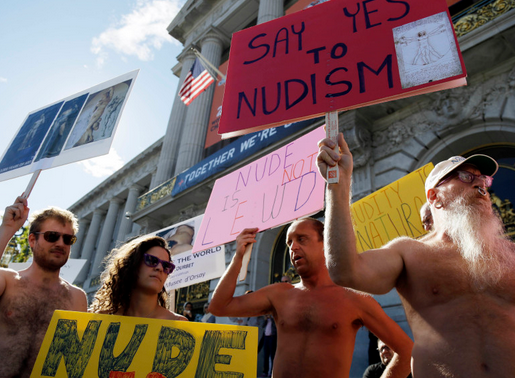
A groundbreaking study by UC Berkeley and MIT researchers has pinpointed a small group of drivers making Bay Area freeways miserable for the rest of us, though the reason may surprise you.
These commuters aren't necessarily slow or bad drivers. Instead, they come from a few outlying neighborhoods and travel long distances together in the same direction like schools of fish -- clogging up not only the roads they drive on, but also everyone else's.
The study's authors anonymously tracked more than 350,000 Bay Area drivers using their cellphone and GPS signals -- the first time that's been done -- to gather some of the most detailed data yet on what causes our traffic jams. Caltrans and local transportation officials are now reviewing the results and plan to incorporate simple measures such as additional metering lights to spread out the volume of drivers coming from places where residents suffer the worst traffic, including southeast San Jose, Hayward, Dublin, San Rafael and San Ramon.
By targeting those drivers to reduce the number of vehicles on Bay Area roads by just 1 percent, drivers would see the time they spend fuming in traffic drop by 14 percent -- nearly 8 minutes saved per hour, the study concludes.
"This has enormous potential," said study co-author Alex Bayen, a UC Berkeley professor of electrical engineering and computer science. "These findings are going to come into practice in the near future. This is not just a scientific study."
Skeptics may wonder how such small tweaks could produce such big results.
But consider how freeway traffic flows smoothly until it reaches a tipping point -- when too many cars cram onto the road and, out of nowhere, you'll go from cruising along to creeping by, even when there aren't any accidents. That's because traffic increases exponentially once a road's capacity has been reached. When the number of vehicles on a congested road grows by 1 percent, you're likely to slow down by 5 percent.
The good news is that you can speed up noticeably when just a few cars leave the roadway, one of the main reasons officials have tried chipping away at the edges by encouraging people to take transit, carpool, telecommute or avoid rush hour. The new study found that effort will be about three times more effective if you can get certain drivers from the corners of the Bay Area off the road during peak travel times.
Take the southeast San Jose region along the Highway 101 corridor, where residents spend more time in traffic than just about anywhere in the Bay Area, including people living in denser districts around downtown. That's because downtown San Jose residents drive off in several directions, spreading out the traffic flow, while residents on the south side are all driving north together to jobs in the heart of Silicon Valley, jamming the freeway.
If a driver from southeast San Jose can avoid rush hour, he would not only commute faster but also contribute toward speeding up commutes for his neighbors driving north on 101 and Interstate 280 and people from different neighborhoods going to the same destinations. The same thinking would hold true for people in the East Bay who drive west to work, often across the Bay and San Mateo bridges or through the Caldecott Tunnel, and North Bay commuters who head south across the San Rafael and Golden Gate bridges.
Tim Hyde, who joins the slog from his Morgan Hill home up Highway 101 to his structural engineering job in San Jose's Willow Glen district, wasn't surprised by the report's findings. He sometimes leaves extra early or rides his motorcycle to avoid being part of the traffic problem.
"Sometimes I kind of feel like I'm just stuck there with everyone else," said Hyde, 53. "Show me a better route, and I'll take it."
John Goodwin, a spokesman for the Metropolitan Transportation Commission, the region's transportation planning agency, says the best way to spread out traffic coming from these neighborhoods is to install metering lights at their freeway onramps, which spaces out the traffic to help both those drivers and everyone else get to their destinations quicker. Though many important Bay Area freeways already have metering lights, such as Interstate 280 in the South Bay and Interstate 680 in the East Bay, others don't.
The data could also help provide the information needed to make roads and transit service more efficient, potentially saving tax dollars on unnecessary projects, the authors said. Bayen is particularly optimistic about targeting people living in these outlying neighborhoods to inform them that a change to their commute -- even something simple like leaving an hour later than normal -- could save them and others lots of time.
Caltrans, which is working with the researchers, issued a brief statement saying it "will look for ways to incorporate this information in our traffic operation systems."
The study also looked at traffic in Boston and came to a similar conclusion, leading researchers to argue that their strategy could be applied broadly to many other cities and countries.
The three-week study, published Dec. 20 in the journal Scientific Reports, was funded by public and private sources. The participants were customers of an undisclosed cellphone carrier that made its data available through a partnership with MIT, meaning you could have been involved in the study without knowing it. Researchers stressed, however, that all the data gathered in the study will be kept confidential.
Contact Mike Rosenberg at 408-920-5705. Follow him at Twitter.com/RosenbergMerc.
about the study
Participants: 356,670 (one of every 15 Bay Area residents)
Miles of road covered: 15,558
Vehicles per hour on Bay Area roads: 730,000
Cellphone towers used: 892
Study period: Three weeks
Source: "Understanding Road Usage Patterns in Urban Areas," published Dec. 20 in Scientific Reports ___
(c)2013 the San Jose Mercury News (San Jose, Calif.)
Visit the San Jose Mercury News (San Jose, Calif.) at www.mercurynews.com
Distributed by MCT Information Services
